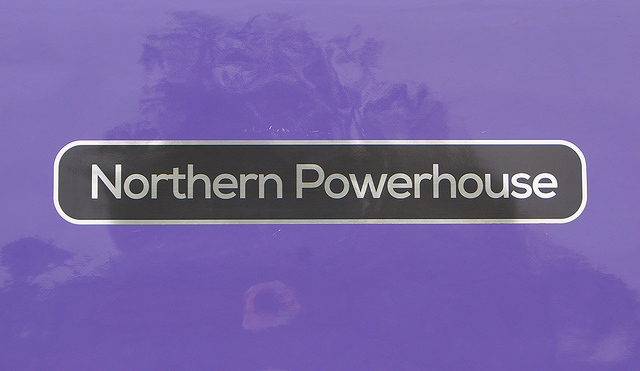The Government must resist the widening, and therefore dilution, of the Northern Powerhouse beyond Manchester, Leeds and Sheffield
The Government’s policy for the creation of a “Northern Powerhouse” has received much comment, with the idea taking its first hit when the government announced that it would delay the promised introduction of new electric trains on key routes. Here, Paul Lakin argues that despite this, there is much potential for the idea – but that the government must resist calls for it to be widened to include the North East, Cheshire, and other northern areas lest the idea becoming ‘diluted’.
The ‘northern powerhouse’ has already suffered one major setback. The decision to delay the introduction of new electric rolling stock on trans-Pennine lines has caused much gnashing of teeth and rightly so, the whole powerhouse edifice stands on the principle of connectivity.
The logic of the northern powerhouse is that three of the five largest cities in England sit alongside each other, from Liverpool to the west through Manchester to Leeds in the east is a distance of just 64 miles as the crow flies. Just 29 miles to the south of Leeds is another major city, Sheffield, which is also only 32 miles east of Manchester.
Put this in a global context, if you start driving in Santa Monica at the far western side of Los Angeles and continue until there is a break in continuous urban development you will have travelled nearly 100 miles.
These large English cities are actually incredibly close to each other, and that should be a good thing. Combine the populations of these cities and consider the sheer size and diversity of the labour pool. In modern parlance, a genuine agglomeration economy exists. So why is the north not benefitting from the proximity of four of England’s largest cities? The answer: terrible connectivity.
The Pennines don’t help of course. The road link between Sheffield and Manchester is picturesque, but that is because it is a slow, windy road that gets closed regularly throughout the winter. For businesses wishing to access Manchester Airport, a mere 37 miles away, the rail journey takes around 90 minutes. In fact journey times between all the major conurbations are hopelessly slow by train and road and are often miserable due to the sub-standard rolling stock. Added to this, many of the stations on the trans-Pennine route have short platforms, hence short trains, hence hopeless overcrowding.
The vision for the four cities should be for fast, environmentally friendly (not diesel) trains with long carriages making high-frequency trips between the cities and Manchester Airport, while using integrated ticketing. This should not be considered a wild ambition for the fourth largest economy in the world. However, the problem for the north is the formula used by civil servants to calculate the relative benefits from different transport investments. A key component of the formula is the level of local wages. This, not surprisingly, tilts investment projects towards London and the greater south east.
The northern powerhouse is an excellent mechanism to further the ambition of connecting four of the great cities of England together. However, it is not just funding that might undermine this, it is also the threat of geographical dilution. Cities outside of this ‘core’ don’t want to miss out. Lord O’Neil, the minister for the Northern Way, has been explaining how Stoke might benefit. No doubt Hull, York and Chester will have similar perceptions of missing out. And now the north east wants in on the northern powerhouse. But bend to this will, and the simple and logical concept at the heart of the powerhouse will lose focus, and so too would the credibility of the overall proposition.
This was the problem of the Prescott-inspired Northern Way. The boundaries kept moving outwards. The focus was lost. The three regional development agencies lost interest, and the budgets made available for the Northern Way would just be carved up with little obvious strategic intent. The element of the Northern Way which always made the most sense was the transport working groups. But compromised by artificially including the north east, which has little functional economic relationship with the ‘group of four’ cities, unsurprisingly a coherent agenda failed to emerge.
The branding may have changed, but the risk of dilution remains as strong as ever.
—
This post originally appeared in New Start magazine, and is reposted with permission. It represents the views of the author, and not those of Democratic Audit UK or the LSE. Please read our comments policy before posting.
—
 Paul Lakin is the director of Urban Policy Associates and blogs at www.urbanpolicynorth.co.uk
Paul Lakin is the director of Urban Policy Associates and blogs at www.urbanpolicynorth.co.uk






 Democratic Audit's core funding is provided by the Joseph Rowntree Charitable Trust. Additional funding is provided by the London School of Economics.
Democratic Audit's core funding is provided by the Joseph Rowntree Charitable Trust. Additional funding is provided by the London School of Economics.
The Government must resist the widening, and therefore dilution, of the Northern Powerhouse beyond Manchester, Lee… https://t.co/WgOyKicpGq
The Government must resist the widening, and therefore dilution, of the Northern Powerhouse https://t.co/Gcsu4dN86t
Widening the Northern Powerhouse beyond Manchester, Leeds & Sheffield would dilute it; so UK ministers should veto it https://t.co/RvsyGLwyg7
The Government must resist the widening, and therefore dilution, of the Northern Powerhouse… https://t.co/mIuEIsKrca https://t.co/iTUygeQ72e